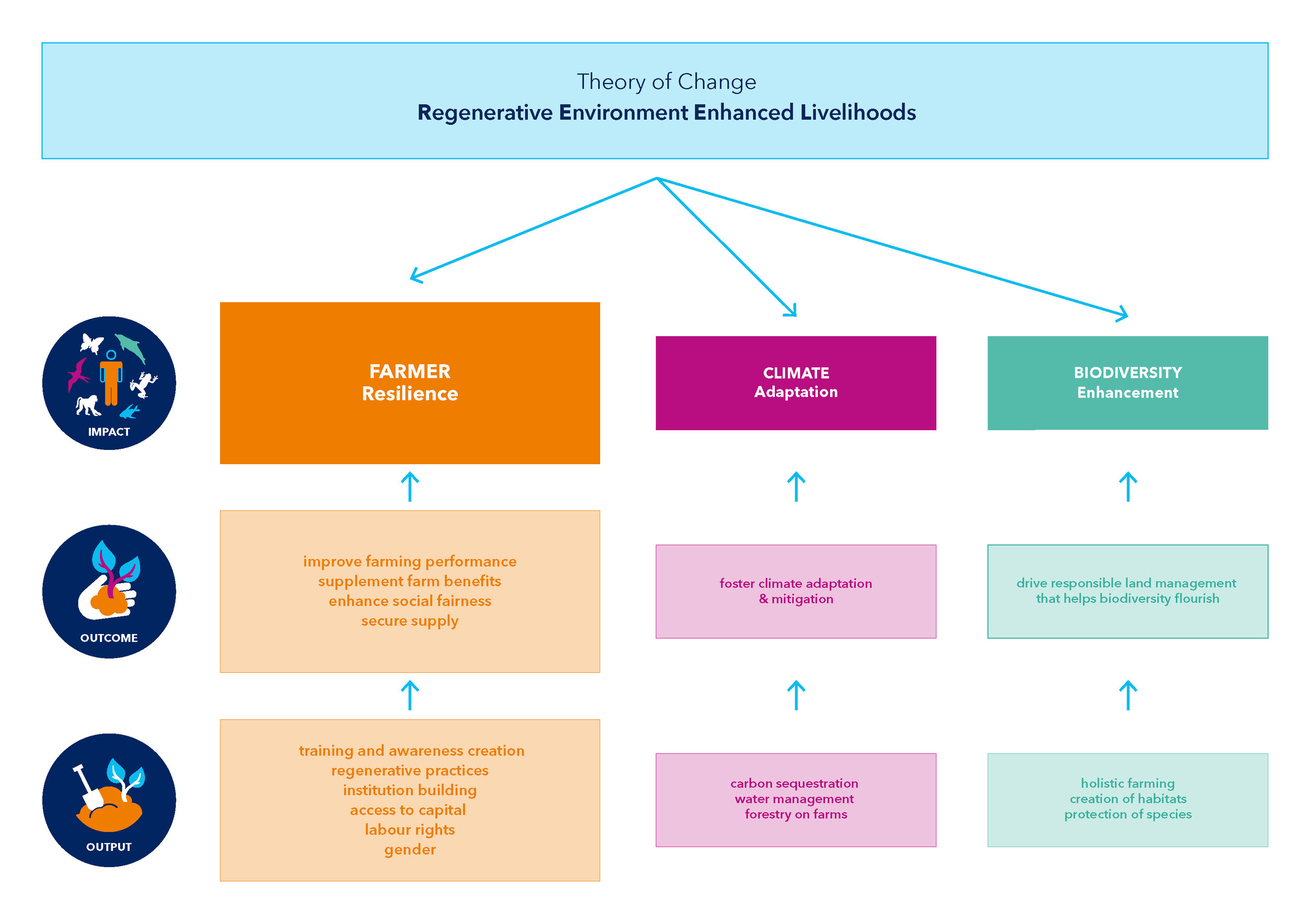Going beyond sustainable: Is regenerative agriculture the future for raw material supply chains?
By Arif Makhdum, CottonConnect’s Country Manager, Pakistan
As an agronomist, working in the field for the past 30 years, I’ve witnessed significant changes to our environment.
In Pakistan, a lack of training has meant farmers have spent many years using too much water, and applying too many agro-chemicals, including both fertiliser and pesticides to their land. As a result, the soils have been completely depleted; the organic matter has reached such a low level that it cannot sustain productivity.
And our biodiversity is being eliminated, with butterflies, birds and reptiles slowly disappearing. Eight species of honeybee have been lost from Pakistan in the last 25 years. That’s a problem because the honeybee is such a good pollinator, helping to boost productivity.
Our farms, and the wider ecosystem, need regenerating. That’s why I’ve been working on the REEL Regenerative Code for Cotton to introduce various regenerative farming practices and new techniques to cotton farmers, which not only enhance but also enable them to foster mitigation and adaptation to climate change. It’s a win-win for the farmers and for the environment.
Boosting conservation
Practicing regenerative agriculture includes various interventions. These include intercropping, border and mix cropping and improving soil health through carbon sequestration. This is not something farmers have been doing, especially on cotton farms. But it’s so important.
Arif Makhdum is CottonConnect’s Country Manager for Pakistan.
Working with more than 3,000 farmers to pilot the Code, we have seen the benefits first-hand. When farmers plant sorghum alongside their cotton, for example, it attracts birds back to the fields. This is great because birds eat many of the pests that cause farmers such a headache. They eat the larvae of the bollworm from the cotton crop. This reduces the need to use pesticide which, in turn, encourages the honeybee to return. Now, bees are building their hives in cotton crop fields. For the first time in a long time, farmers can harvest honey as well as cotton, giving them extra income throughout the year, safe in the knowledge that biodiversity is being enhanced and the natural environment is being restored and protected.
Another intervention is boosting agroforestry by engaging rural women and building their capacities in forest nursery raising – and selling the saplings to local farmers to grow trees on farms, thus enhancing the livelihoods of women.
The Code also supports farmers to improve the wellbeing of their animals (most farmers also keep cattle or sheep). By doing so they improve the quality of the milk they use for the family and the manure they can use on their farms to improve soil health.
Using the Code helps to give farmers the confidence to realise that they are often spending money for nothing. Using natural fertilisers, such as compost will enhance soil health. And reducing the amount of chemical fertilisers being applied to the land by 20-25% – as per the requirement based on soil analyses – will have no impact on yields, so farmers can instantly save money.
Working in partnership
Bringing the REEL Regenerative Code into the world has been a real consultative process, with all stakeholders, including farmers, involved in its development, both at a local and global level. And we have trialed the Code as part of the Primark Cotton Project (formerly the Primark Sustainable Cotton Programme), the initiative we launched with the brand back in 2013 to help farmers grow cotton using more environmentally friendly farming practices.
Our Code is based on our Theory of Change to boost farmer resilience, while adapting to climate changes and enhancing biodiversity.
The CottonConnect Theory of Change.
We’ve worked with the University of Cambridge Institute for Sustainability Leadership (CISL), the Carbon Trust and Biodiversify to develop key performance indicators to measure impact on biodiversity, soil and water among Primark Cotton Project (formerly the Primark Sustainable Cotton Programme) farmers in Gujarat, India. In addition, we undertook a carbon footprint analysis with the Carbon Trust to assess greenhouse gas emissions.
The Code is now being piloted in three countries: Pakistan, India and Bangladesh. And we’re delighted with the results that have been achieved so far.
Whilst these are initial pilots, early indications show that on average, biodiversity scores were 22% higher when compared to farms not in the programme. By reducing fertiliser use on the farmers, greenhouse gas emissions are lower than farms not in the programme.
Read the REEL Regenerative factsheet for more information.
To find out more about how the REEL Regenerative Code can help your organisation, get in touch today.
































